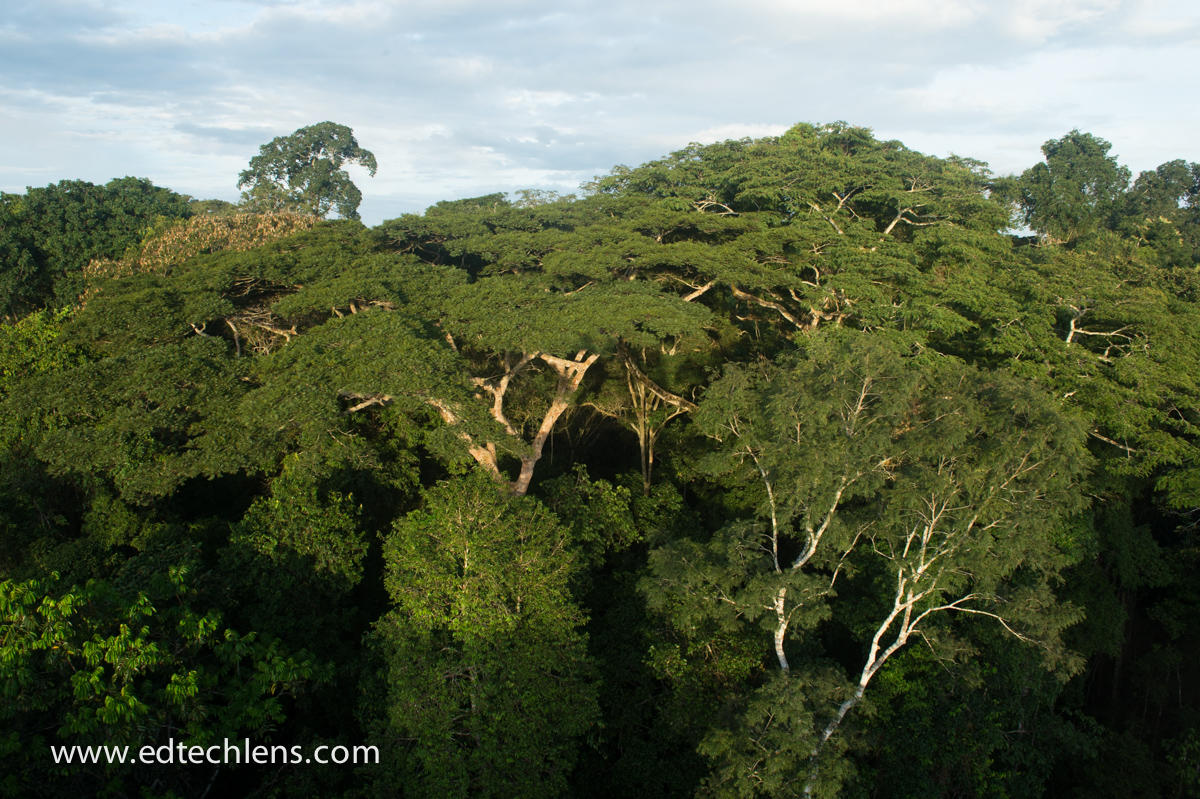To emerge from something or somewhere, means to move out or away, or even to come into view. Can you think of why then, the top-most layer of the rainforest is called the emergent layer?
The emergent layer is where the tallest trees can be found, poking high above the dense treetops of the canopy layer just below. The trees that make up the emergent layer can tower as high as 200 feet, with tree trunks that can measure up to 16 feet in diameter. Look at the image below. See how the trees in the emergent layer stand above all the others in the rainforest?
As you can imagine, this is the layer that receives the most sunlight too. Because the sun is very hot, the trees of the emergent layer have a special adaptation: their leaves have a waxy coating that helps protect against the harsh rays of the sun. In addition to getting a lot of sunlight, the trees in the emergent layer are also more exposed to the heavy winds. But this can be a good thing, as the winds help to shake loose the seeds and pollen that is necessary for the trees to reproduce.
The emergent layer is where the tallest trees can be found, poking high above the dense treetops of the canopy layer just below. The trees that make up the emergent layer can tower as high as 200 feet, with tree trunks that can measure up to 16 feet in diameter. Look at the image below. See how the trees in the emergent layer stand above all the others in the rainforest?
As you can imagine, this is the layer that receives the most sunlight too. Because the sun is very hot, the trees of the emergent layer have a special adaptation: their leaves have a waxy coating that helps protect against the harsh rays of the sun. In addition to getting a lot of sunlight, the trees in the emergent layer are also more exposed to the heavy winds. But this can be a good thing, as the winds help to shake loose the seeds and pollen that is necessary for the trees to reproduce.

Animal life in the emergent layer ranges from the tiniest hummingbirds, colorful macaws, and mammals such as sloths and spider monkeys. And you probably will not see animals that are too big in the emergent layer; this is because to move from place to place, animals must be able to hang from, or jump onto, the many tree branches.
Something to Think About: How does the emergent layer help the other layers of the rainforest to survive?
Something to Think About: How does the emergent layer help the other layers of the rainforest to survive?
Want to Learn More? Check out Rainforest Layers at the Smithsonian and Rainforest Layers at the Rainforest Alliance.
Rainforest Kids Science curriculum connection: Unit 1: Chapter 1; Lesson 4; Grades K-5

